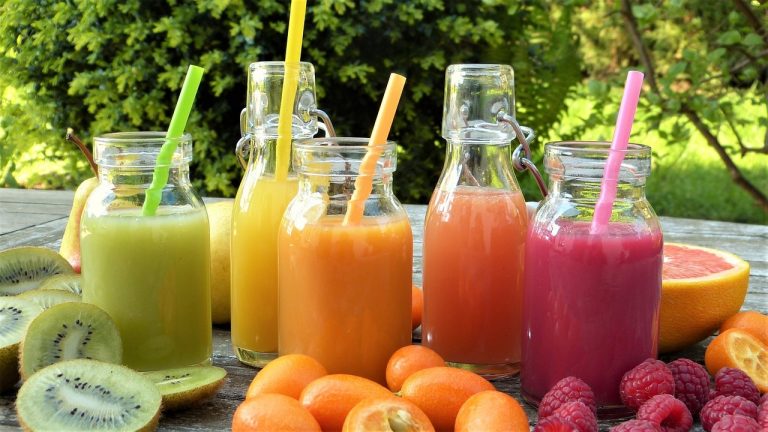Sauerkraut

Ingredients:
- 1 medium-sized green cabbage
- 1 tablespoon sea salt (non-iodized)
- Optional: Caraway seeds, juniper berries, or other spices for flavor
Instructions:
- Prepare Cabbage:
- Remove outer leaves from the cabbage, set them aside.
- Shred the cabbage finely using a knife or a food processor.
- Massage with Salt:
- In a large bowl, mix the shredded cabbage with sea salt.
- Massage the cabbage with your hands for about 5-10 minutes until it releases its juices.
- Add Flavor (Optional):
- Add caraway seeds, juniper berries, or other spices for additional flavor.
- Pack in Jar:
- Pack the cabbage mixture tightly into a clean glass jar, pressing it down to ensure there are no air pockets.
- Cover with Cabbage Leaves:
- Place the reserved cabbage leaves on top to create a barrier between the cabbage and the air.
- Weigh it Down:
- Place a weight (a smaller jar filled with water or a specialized fermentation weight) on top of the cabbage to keep it submerged in its own juices.
- Cover and Ferment:
- Cover the jar with a lid or a cloth and secure it.
- Allow it to ferment at room temperature for 1-2 weeks. Check regularly.
- Taste and Store:
- Taste the sauerkraut, and once it reaches your desired level of fermentation, move it to the refrigerator.
Benefits and Nutritive Value:
1. Cabbage:
- Benefits:
- Low in calories and high in fiber, promoting digestive health.
- Rich in vitamins C and K.
- Contains antioxidants and phytonutrients with potential anti-inflammatory properties.
- Nutritive Value:
- Vitamin C
- Vitamin K
- Fiber
- Antioxidants
2. Sea Salt:
- Benefits:
- Acts as a natural preservative.
- Essential for the fermentation process by creating a brine that encourages the growth of beneficial bacteria.
- Nutritive Value:
- Sodium
3. Caraway Seeds (Optional):
- Benefits:
- Adds a distinct flavor to sauerkraut.
- May have digestive benefits.
- Nutritive Value:
- Fiber
- Essential oils
4. Juniper Berries (Optional):
- Benefits:
- Contributes a unique flavor to sauerkraut.
- May have antibacterial and anti-inflammatory properties.
- Nutritive Value:
- Antioxidants
Overall:
- Fermentation Benefits:
- Sauerkraut is a fermented food, and the fermentation process involves beneficial bacteria (probiotics) that can support gut health and digestion.
- Probiotics in sauerkraut may contribute to a healthy balance of gut microbiota.
- Rich in Nutrients:
- Sauerkraut retains the nutritional benefits of cabbage, providing essential vitamins and minerals.
- Low-Calorie Snack:
- Sauerkraut is low in calories, making it a healthy snack or side dish.
- No Additives:
- Homemade sauerkraut allows you to control the ingredients, avoiding additives or preservatives often found in store-bought versions.
- Antioxidant Content:
- Cabbage, along with optional ingredients like caraway seeds and juniper berries, contributes antioxidants that may help combat oxidative stress.
- Digestive Health:
- The fiber content in cabbage supports digestive regularity.
- Homemade Versus Store-Bought:
- Homemade sauerkraut often contains more live probiotics compared to pasteurized, store-bought versions.
Tips:
- Taste Testing:
- Regularly taste the sauerkraut during the fermentation process to find your preferred level of tanginess.
- Adjust the fermentation time according to your taste preferences.
- Storage:
- Once fermented to your liking, store sauerkraut in the refrigerator to slow down the fermentation process.
- Individual Considerations:
- If you have specific health conditions or concerns, consult with healthcare professionals, especially regarding sodium intake.
Homemade sauerkraut can be a delicious and nutritious addition to your diet, providing both flavor and potential health benefits.
February 5, 2024
0



